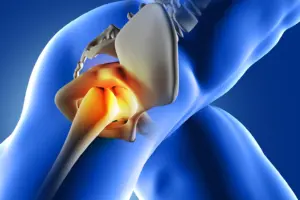
What is sciatica: Ever felt a sharp, zinging pain that starts in your lower back and shoots down one leg? That’s likely sciatica. It’s not just “regular” back pain; sciatica happens when the sciatic nerve is irritated or compressed, and it can be far more intense. You may experience symptoms like burning, tingling, or numbness in the buttocks, thighs, and calves.
In this guide, you’ll learn what sciatica is, why it happens, common symptoms, and the treatment, as well as prevention plans.
Also Read | Are you hurting your back without knowing it? 10 habits to watch
What is sciatica?
Think of sciatica as a warning sign, not a standalone condition. It happens when the sciatic nerve gets compressed or inflamed. Because the nerve travels from your lower spine through the hips/buttocks and down each leg, you experience shooting pain that starts in the back and follows the nerve path. It is usually one-sided and ranges from a dull ache to sharp, severe pain.
How is sciatica different from regular back pain?
Regular back pain tends to be local and stays in the back. Sciatica travels. You may feel it from the lower back into the buttocks, thigh, calf, or even the foot. The sensation can be sharp, burning, or pins-and-needles, following the path of the sciatic nerve.
What causes sciatica?
Herniated or slipped discs are one of the most common causes. When one of the discs between your spinal bones slips out or bulges, it can press on the nerves.
Spinal stenosis is a condition in which the spinal canal has narrowed, placing pressure on the nerves. The piriformis, located in the buttocks muscle, can sometimes tighten and press on the sciatic nerve. Spondylolysis happens when a vertebra slips forward onto the one below. It can also squeeze your nerves.

Who gets sciatica?
Sciatica can occur at any age, though it is more common between the ages of 30 and 60. Prolonged sitting, frequent heavy lifting, and being overweight or obese can contribute to its development. Pregnant women may develop symptoms as the uterus expands and compresses nearby nerves.
How long does sciatica last?
Most cases of sciatica resolve on their own within a few weeks. If the underlying cause isn’t addressed, pain can linger for months. See a doctor urgently if pain is severe or you have loss of bladder or bowel control.
How to manage sciatica at home?
Most people can manage sciatica at home. A little rest is fine if pain is sharp, but days in bed can make it worse. Use an ice pack for 48–72 hours to calm inflammation, then switch to gentle heat to relax muscles. Add light stretching like knee-to-chest or child’s pose to ease nerve pressure.
Also Read | Chronic or acute back pain? Here’s how to identify the type
Sciatica may start in the lower back, but it can hijack your day as pain travels down the leg. Most people improve with time, movement, and a few smart habits.








